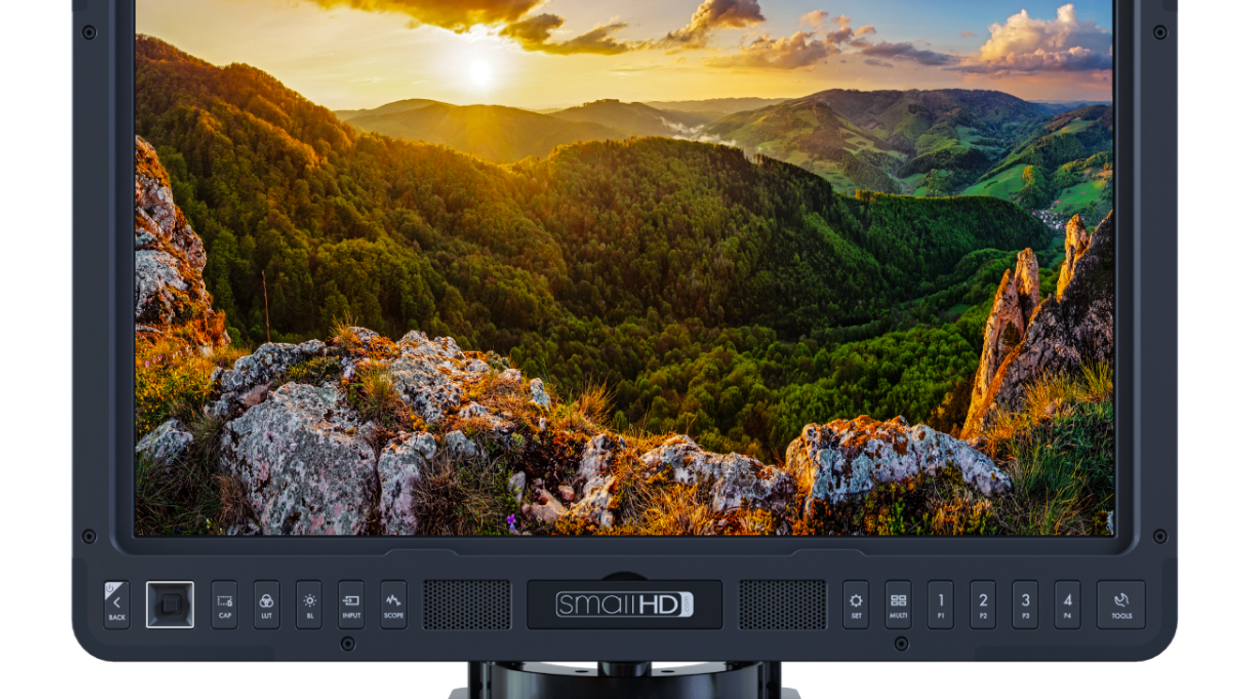SmallHD Releases Calibrated DCI-P3 17" Monitor
The new 1703 P3 17" monitor from SmallHD is calibrated to accurately represent the full gamut of the DCI-P3 color space.

SmallHD is currently best known for its small, high-brightness monitors like the 702 Bright. As part of its expanded offerings, the company has just released the 1703 P3, with the marquee feature of accurate coverage of the full DCI-P3 color gamut. This is a major perk for not only filmmakers focused on theatrical release, where the P3 space is the norm, but also filmmakers working in Rec. 709, the smaller space more common in TV and on the web. A monitor capable of showing the billions of colors in the DCI-P3 space accurately should handle Rec. 709's smaller gamut with ease.
While many monitor manufacturers calibrate their monitor before shipping, SmallHD is putting the individual monitor calibration front and center in its marketing of the DCI-P3. This is a bold move, since it puts special attention on not just the breadth of the gamut, but also the accuracy, which will likely have users posting their personal test results if the monitors fail to live up to the marketing hype. SmallHD claims the monitor regularly achieves an average Delta LogE of .5, which is very impressive. Delta LogE is a method of measuring accuracy, and anything lower than 2 is considered acceptable for motion picture work and unnoticeably different from perfect to to the human eye.
Of course, calibration accuracy will drift over time, and it will likely need to be re-calibrated on a somewhat regular basis—at least every year or so. SmallHD is very public about their calibration process, using a Klein K10, SpectraCal software (it appears to be CalMan), and a 3D LUT loaded into the monitor. While this is expensive gear, it's also quite commonly available in most major media markets and users should have no problem finding calibrators to keep the monitors accurate.

Other features of the monitor make it appealing for both on set and post production use. SmallHD build quality has been impressive for their previous monitors, and this monitor continues the trend, with a well designed accessory bracket on the rear for mounting V-mount or Gold Mount batteries and mounting and powering other common tools like wireless video receivers via 2-pin Lemo. 179° viewing angle and 1500:1 contrast ratio will make it a strong choice in a variety of environments. However, its 450 nits brightness won't make it an HDR monitor or the best monitor when working in direct sunlight, but in this case accuracy is worth the trade off of having to find shade or a tent to work in on outdoor shoots.
The monitor is shipping late February 2017 with an announced price of $3999.
Tech Specs
- 17" monitor
- Average DLogE of .5
- Dual Inputs
- Dual view of both inputs, or single input clean/processed
- Built-in waveform, vectorscope
- 1500:1 contrast ratio
- 179° viewing angle
- Pagebuilder OS
- Color flow 3D LUT engine
- SD slot for LUT load
- Milled aluminum body
- 1/4-20 and 3/8" mounting bolts throughout
- VESA mount
- 450 nits brightness
- Adjustable backlight with 100nit studio mode










![Ethos, Pathos, Logos: 20 Effective Ways to Advertise [Infographic]](https://nofilmschool.com/media-library/ethos-pathos-logos-20-effective-ways-to-advertise-infographic.jpg?id=34064614&width=600&height=600&quality=90&coordinates=560%2C0%2C0%2C0)

